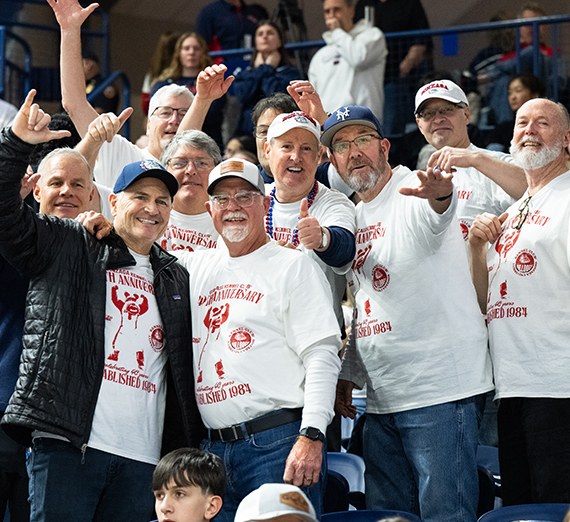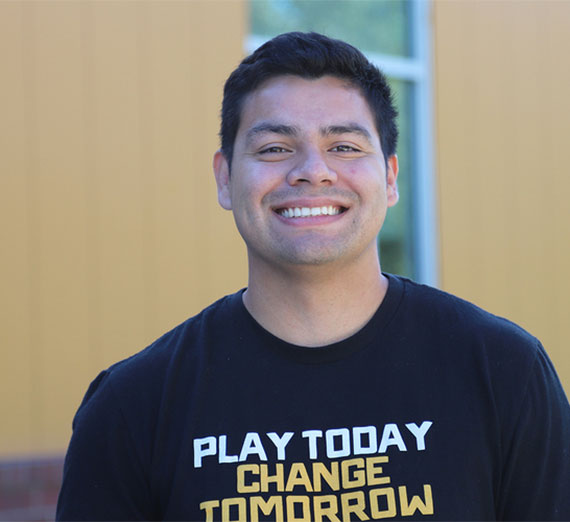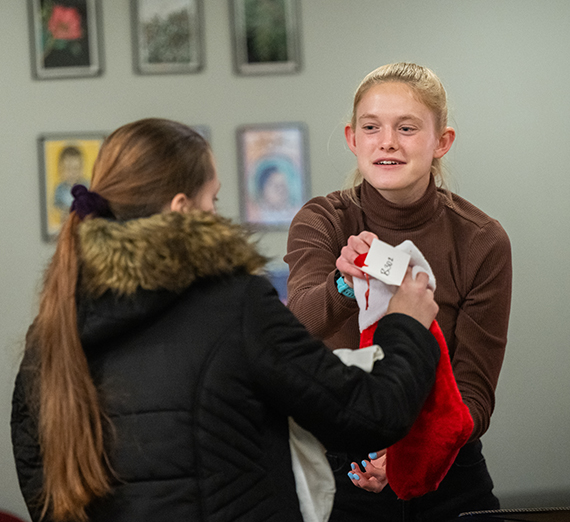“Success is Showing Up Each Day”: Community Profile of 'If You Could Save Just One'

At-risk youth often go under the radar for various reasons. Insular family structures, emotion turmoil, economic insecurity, and insufficient government resources in programs meant to protect children all worsen the plight of at-risk youth. More often than not, our society fails to fully understand who counts as ‘at-risk’, and such a label places scrutiny not only on parents but also the children themselves. Family situations present increasingly complex dynamics which from the outside aren’t easily deciphered. As such, it can be difficult as a community to assess and respond to the needs of at-risk youth. But, as Natalia Guiterrez’s organization If You Could Save Just One proves, it isn’t impossible.
Natalia’s work at Just One comes from a place of personal pain. At age 13, her son went missing. While stricken with grief, this pain also inspired reflection within her. Natalia refused to let her son be lost to the world and decided to seek out resources.
The process that followed opened her eyes to the broader problems of at-risk youth. She realized she was not alone in this nationwide struggle. She witnessed many parents similarly deal with the confusing process of finding resources for their children and ensuring their safety. Through a long process of attending meetings, browsing the web, and talking to other parents, Natalia became educated on the issue and its possible solutions.
Eventually, she sought to create a solution herself, providing a space for kids that lets them have fun, offers them access to safe, healthy adults they can turn to, and freely distributes outlets to responsibly manage the hardship they may be experiencing at home or school rather than turning to substance usage, isolation, and even violence.
Building something beautiful from her pain, Natalia reversed the cycle of trauma in her own life and adolescence, using her empathy and wits to help her community. Her experiences as a parent with her son Johnny inspired her admirable endeavor to not only change her own situation but to prevent it from happening to others.
What’s most fascinating about Just One is that its implementation was never really planned. Natalia revealed that the nonprofit “was never the final goal”, but rather naturally developed over time as she discovered the community’s need for at-risk youth support. The kind of intense work, planning, and ever-stressful grants required for such an organization also showed Natalia why such an organization is so rare in the first place but conversely all the more necessary, too.
Natalia also offered some crucial insight into the frequently misunderstood world of at-risk youth. At-risk youth, teens especially, are considered as such because they sometimes lack appropriate role models in their life to show them what ‘healthy’ decisions can or should look like. One of the organization’s many ways of helping these children is to supply access to such role models in a safe environment. The stability and safety these mentors give helps ground youth and set them on a better path.
Oftentimes, Natalia explained, children just need someone to really listen to them without judgment or fear. The availability of a trustworthy adult at 3AM can make a critical difference in the development of these young adults.
The other side of this dynamic involves general misconceptions surrounding these children. While the emotional turbulence of teenhood might make people wary, Natalia explains that it is in this period where teens need a listening ear more than ever.
For at-risk youth, this is doubly true. They are not kids who simply like to get into trouble, she elaborates. Rather, they are developing young people often dealing with tough situations; situations which they should not have to experience at all. While the kneejerk reaction to such youth is to label them as “up to no good”, Natalia stresses the importance of empathy and patience. If there’s a stronger emphasis on building connection as the response to youth, we all can make a difference and help improve the situation.
This is a responsibility we often unknowingly place on underpaid and overworked teachers. While teachers deserve all the support and respect in the world, several members of our community have already taken steps to fill in the gaps. We all can contribute to this in some way.
In fact, many young people often get involved through working as tutors for Just One. This service provided by Just One connects kids with students and individuals from various walks of life, including those who have been on probation or have experience with the legal system. Tutors and mentees do art, gardening, and make music as they bond. Natalia details that these tutors understand the complicated situations of these teens and can empathize with them, while still having fun and setting kids on a positive path to better themselves.
Natalia expands upon this in our following question:
What role do tutors get out of being involved in Just One?
NATALIA: “There are various perspectives to consider—whether it's the adult eager to give back but unsure how, the high school graduate grappling with their own learning disabilities, or the smart kid from Ferris who, despite his intelligence, is coping with the tragic loss of his father. Each individual is unique, but they all possess compassion. In certain challenging situations, it can be difficult for people to figure out how to contribute to society. My role is to help them find their niche.
Most kids aren't necessarily enthusiastic about being tutored; often, it's their parents signing them up. However, Just One's mission is to connect them with someone who shares their interests and can provide assistance. We focus not only on textbook learning but also on incorporating their passions into the subjects that need to be taught. Building relationships takes precedence, and as connections grow, grades tend to improve. Since students spend the whole day in school, our approach emphasizes forming connections before diving into tasks.
People who approach me wanting to be tutors usually have an immediate passion for helping, but the challenge lies in finding a balance between the tutor and the student. Going back to the smart kid who lost his father—although he feels a profound sense of loss, he recognizes his intelligence. Despite the ache in his heart, he is filling a void, and that void is a sense of belonging. Similarly, for the kid reluctant to go to school and being taught by someone with a disability, finding solitude becomes crucial.”
Following this, we became interested in the organizational side of this effort. My interview partner asked Natalia some follow-up questions about the challenges of Just One to understand how it operates.
Sammy: About what time during Just One did you settle on a location in partnership with the nearby church?
NATALIA: “I was established in 2018 and came to the garage in March of 2018 with my idea, but I took time getting the garage established from March of 2018 to about February of 2019. I had a lot to learn, not only about nonprofits, but I also had a lot to learn about the neighborhood, systems, resources, etc. Although I lived in the neighborhood for 13 years at the time, I never really sought resources while living my day-to-day life. Unfortunately, some of us don't seek resources until crisis hits. It took about 11 months to get the garage fixed up to be suitable for youth. This brings us to 2019 when we were ready to rock and roll. It started with just me in there with kids, then we got volunteers, sought out funding, and it took off. Then COVID hit, and we pivoted to Project in a Bag. Once COVID allowed us to open back up, we had way more kids than I ever had.”
S: As you went through the process of creating Just One, you found that you weren't alone in your pain. What has been the reaction from families in the neighborhood?
N: “Participant engagement has indeed yielded a highly positive response. Many community members express a profound sense of relief in having a local resource like Just One available within walking distance, particularly I'd say during after-school hours and summertime. While I may not have all the answers, I strive to effectively guide individuals toward pertinent directions.
The real challenge emerges in the subsequent steps involved in seeking help. Getting help involves tricky steps, like understanding complicated details in one’s story, back story, dealing with long waits when you need something now, and some families getting treated better just because they look fancier or talk with better vocabulary. It's easy for families to get confused, lost, and frustrated while trying to get help for their kids or themselves.
Negotiating the complexities of crisis situations proves to be challenging due to inherent difficulties in accessing appropriate resources. Success in this endeavor often depends on personal connections and networks. Therefore, the collaborative efforts of Just One are integral in facilitating a smoother passage for families toward resources that can provide assistance. Establishing and expanding our network is crucial to simplifying the process and ensuring that families are seamlessly connected with caring individuals.
The shared experiences and circumstances within the Just One team foster a sense of empathy and understanding within the community. This shared foundation helps families trust that our guidance is not arbitrary but stems from a genuine understanding of their challenges. Knowing the right people is crucial. So, having Just One within walking distance of many of our participants is really important to families that want to connect with caring people who can listen. Our team understands what families are going through, we all share our own experiences, and that helps families trust us. Getting help to break down stereotypes and encourage those in high-paid positions to extend assistance in the hood is another story ;) Basically, we are the middleman.”
When asked about the future of Just One, Natalia smiles. She explains that any activities Just One offers often caters to the trending interests of their clients (especially big slides!). Looking ahead, she wants to slow down a little bit. There’s a strong need for Just One’s services and so many children she wishes she could do more for, but there just isn’t enough money or resources. Ideally, Natalia would like to see more Just One organizations in the future: spaces personalized for the needs of the kids and their interests, and spaces which ultimately foster community.
Having grown so much since its inception in 2018, If You Could Save Just One stands tall as an exemplary organization providing a safety net for a population often in free fall. Their work, passion, and humanity speak to the power of collective community efforts—but also to something uniquely personal, reflective, empathetic; to the potential of individuals rising from their pain and pasts to ask themselves: “What can I do for someone else?”
- Opportunity Northeast




